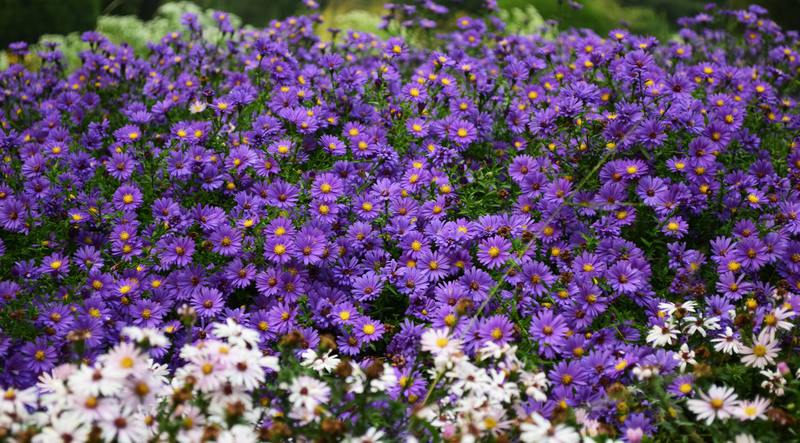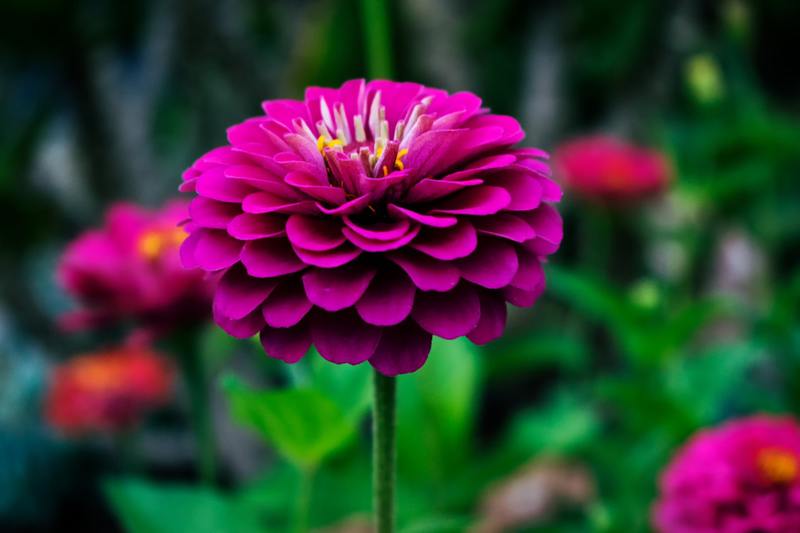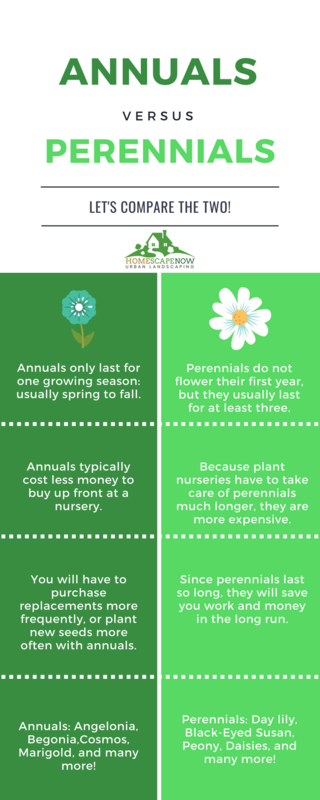Annuals Vs. Perennials

Annuals Vs. Perennials
If you are new to gardening, you have probably heard the terms annuals and perennials frequently but may not have known what they mean. We are going to be discussing the two terms fully, as well as comparing them against each other and talking about their benefits and uses.
These two terms can apply to flowers, plants, food, etc. Because of this, we will discussing this on a broad spectrum of all plants, to help you get started with your garden and landscaping.
What Do the Terms Mean & How Are They Different?

The difference between the two terms “annual” and “perennial” is actually in their life cycles. This refers to the amount of time it takes a plant to grow from a seed, to actually being a full grown plant and producing seeds of its own.
For annual plants, they actually complete their life cycle within one, single growing season. Usually this means between the spring to fall months.
The cycle starts with you planting the seeds from your previous year’s flowers in the ground sometime in the spring. New annual plants begin to sprout from the seeds. Throughout the summertime, you tend to them and they produce flowers. Then, towards the end of their growing season, the annual flowers produce seeds – this signals to the plants that their life cycle has been completed.
Once the annual plant’s life cycle has finished, they usually die around the time of fall’s first big frost. Then the cycle continues with the new seeds the following spring.
There is also a practice called deadheading, which you complete during the summer to actually foster reblooming. This basically means you are able to trick a plant into actually blooming a little longer than it would naturally on its own.
Perennials, on the other hand, usually do not produce flowers in their first year of growth (just like biennials). This means that they actually have a longer life cycle.
Even though they are much slower to reproduce, perennials actually make up for that by flowering more than just one single year. Some only last three years or so, but others last much, much longer.
One aspect that is neat with short-lived perennials however, is that you might not even notice that the original plant died, because its offspring simply replaces it. There are also some annuals that are also self-seeding, meaning they will reappear year after year. One example of this is the Portulaca Grandiflora.
How Do I Remember Which One is Which?

If you find yourself getting confused over what each term means, here’s a little guide to help you out.
You will need to remember the root in both of the terms “perennial” and “annual” is the Latin word for “year,” which is annus.
Perennial plants have something addition in their term, the “per.” This prefix in Latin adds to what comes after it. Basically meaning that perennials will live extra years, or that they will persist longer. Annual plants will simply last for a portion of a single year
Which Ones Should I Include in My Garden?

So which ones are a better deal? How should you decide which types of plants should be included in your garden and landscaping?
The answer really depends on what you are looking for and where you are planting your flowers/plants.
If you go to your local garden center to purchase plants, they are typically going to sell perennials in pots individually. Annuals however, are usually sold in six-packs. This is because annuals are typically referred to as ‘bedding plants,’ because gardeners and businesses can use them to quickly create a flower bed that is filled with life and color.
Generally you are going to be paying more for perennials than for the bedding annuals. This is because they do offer a higher value due to their longer life span, but also because nurseries tend to invest more time and energy into their upkeep.
Since perennials don’t bloom during the first year of their lives, nurseries have to keep them in stock and care for them for a much longer time than they do with annuals. They may have to keep them for months or even years before they are purchased.
Annuals are a great choice for areas like a street-side flower bed where you want huge splashes of color for the whole season of summer. They do bloom for longer periods of time during the summer than perennials do, especially if you decide to deadhead them.
As for the better deal, perennials are going to win that choice. This is simply because they don’t have to be replaced as often as annuals do if they are being cared for properly. Yes, you may spend more money on them upfront, but it will cost you less in the long run.
Our Final Thoughts on Annuals Vs. Perennials

We hope that we were able to answer your questions about both annuals and perennials. No matter which ones you end up going with, or if you decide to get some of each, we know that your end result will look stunning.
Not sure which plants are going to look best? You can always contact us to get some assistance with your landscaping design!





